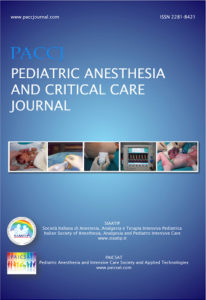Introduction:
It is recommended that pediatric patients be released from the post-anesthesia recovery area once they are no longer at risk for cardiorespiratory depression. However, these guidelines do not specify how a provider is to monitor recovery of neurocognitive status. Previous studies have evaluated the utility of psychomotor tests to measure anesthetic recovery; however, most of these tests are time consuming and are rarely used in the post-anesthesia recovery area. The Trieger Dot Test (TDT) is one of these tests and is a well validated measure of anesthetic recovery. The King Devick Test (KDT) has emerged as a scientifically valid test for a multitude of neurological medical conditions. The test uses a system of Rapid Number Naming which assesses the subject’s ability to read aloud a series of numbers and determines their ability to discern levels of contrast. This test detects impairments of eye movements, language, attention, and overall neurological function and is validated down to an age of 5 years.
Hypothesis:
There is no measured difference in the return to baseline between the King Devick Test and the Trieger Dot Test in determining sedation recovery in non-neurological pediatric patients. Material and methods: Subjects were recruited from the University of Iowa pediatric sedation clinic. The recruited subjects were children and adolescents between the ages of 6-17. No patients with a neurologic diagnosis were included in the study. Each patient performed both the KDT and TDT pre-sedation to establish a baseline. These tests were repeated once when the patient woke up (Post1) and again 20 minutes later (Post2). These tests did not interfere with clinical care, and the discharging physician was blinded to the results. After discharge, the family repeated both tests on the subject at home 24 hours post-sedation. Results: A total of 41 patients were recruited for the study. Extraneous deviations for the TDT were compared to a total score for the KDT which summed the time and errors from all three cards. Baseline was established as baseline +/- 1/5(median change in score after sedation) to account for natural random variation. The results of the paired tests for KDT show that there is a highly significant difference between scores at baseline, Post1, and Post2 (p < 0.001). The p-values for the same tests for TDT were also all significant at the 5% level, however the difference between deviations at the Post2 after sedation is much less significant (p = 0.04). The results of McNemar’s statistical test show no difference between the two assessments at Post1 (p = 0.31), but a significant difference between the assessments at Post2 (p = 0.04). 0.018).
Conclusions:
The paired t-test results show that the KDT, like the TDT, can measure differences in a patient’s cognitive ability during recovery from sedation. Furthermore, McNemar’s statistical test shows that at Post2 the TDT significantly classified more patients at baseline than the KDT. This corresponds with the results of the paired t-tests, in that more patients were close to baseline at Post2 for the TDT, than for the KDT. Overall, we can conclude that there is evidence that the KDT is more sensitive to impairment than the TDT, and if it were used in place of the TDT it would take more time for children to return to baseline after sedation.
Summary Points:
- When compared to the Trieger Dot Test, the King-Devick Test is a valid assessment tool in evaluating cognitive recovery of pediatric patients who receive sedation.
- In addition, the study findings show that it may be more sensitive to cognitive impairment than the Trieger Dot Test.

